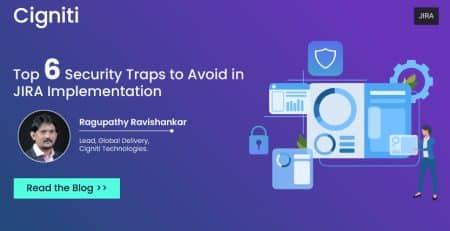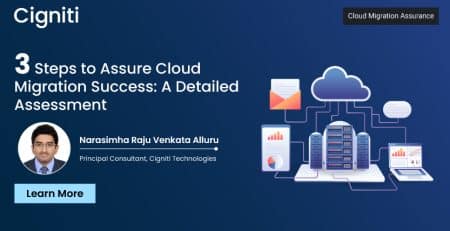Unlocking Efficiency and Innovation Navigating JIRA Cloud Migration for Enhanced Project Management
In today’s dynamic business world, seamless transitions between application life cycle management systems (ALM) are crucial for organizations striving to optimize workflows and enhance productivity. JIRA, a robust and versatile project management tool, often becomes the best choice for teams seeking efficient task management, issue tracking, and collaboration capabilities.
Cloud JIRA’s popularity is a result of its adaptability, comprehensive features, user-friendly interface, strong community support, and ability to accommodate diverse project management needs. Its evolution to affiliate with modern methodologies and commitment to innovation has positioned it as a preferred choice for teams across various industries aiming to streamline processes and enhance collaboration.
Why is Migration to Cloud JIRA a widespread use case?
Any migration isn’t merely about transitioning from one system to another; it’s a strategic decision aligning with an organization’s goals and ensuring adaptability, efficiency, and scalability for future growth and innovation.
Here are some key driving factors for why JIRA data migration might be necessary for any organization:
- Migrating from JIRA server implementations to the JIRA cloud ensures the latest features, improvements, and security updates are available.
- Transitioning from server to JIRA Cloud offers scalability and accessibility and reduces maintenance overhead.
- Aligning with JIRA cloud-based system facilitates real-time team collaboration, allowing seamless communication and project updates.
- JIRA Cloud subscription models offer predictable, scalable pricing structures, reducing upfront capital expenses and providing cost predictability.
- JIRA Cloud platforms often offer a more comprehensive range of integrations with other tools and services, fostering innovation and adaptability within the ecosystem.
- JIRA Data Migration is a part of an organization’s broader digital transformation strategy, aligning with evolving business needs and market trends.
- Cloud-based solutions allow access from anywhere, providing flexibility for remote work and access across different locations.
JIRA Data Migration Process
Here is the end-to-end process involved in JIRA data migration.
Assessment and Planning
Identify the scope of migration, including types of data, custom configurations, workflows, users, and any dependencies. Document how data from the source system will map to the target JIRA cloud instance. Define mappings for fields, issue types, workflows, users, etc. Identify potential risks and challenges in the migration process and develop mitigation strategies.
Data Preparation
Ensure data integrity by cleaning up the source data’s inconsistencies, duplications, and inaccuracies. Modify data formats to fit the target system (JIRA Cloud) if there are differences in field types, structures, naming conventions, etc. Be sure to back up source data to avoid loss during migration.
Configuration and Customization
Prepare the JIRA instance by configuring custom fields, issue types, workflows, permissions, etc., mirroring the requirements from the source system (JIRA Cloud). Depending on complexity, develop scripts or use tools or Excel-based migration designed for Jira to facilitate data transfer while preserving integrity.
Migration Execution
Consider a phased or incremental migration approach, starting with a subset of data to validate the process before migrating the entire dataset. Perform regular validation checks during migration to ensure accuracy, completeness, and data integrity.
Post-Migration Activities
Conduct comprehensive testing post-migration to confirm that all data has been migrated accurately and is functional in the new environment (JIRA Cloud). Provide training and support to users for adapting to the new JIRA environment. Monitor the system post-migration to identify performance issues or discrepancies and optimize as necessary.
Launch
Once the data migration process from the JIRA server to the JIRA cloud is completed, share complete details on the new JIRA cloud setup with end users. Recommend the team to start using the new JIRA cloud version for their projects starting from the date proposed by authorities.
Conclusion
JIRA data migration is a complex yet essential process for organizations seeking to optimize their project management workflows. By understanding the intricacies and challenges associated with data migration, teams can proactively prepare, plan, and execute migration strategies, ensuring a seamless transition to a new and improved JIRA cloud environment. Continual assessment and adaptation ensure that the migration strategy aligns with evolving needs, fostering long-term success and efficiency within the Jira ecosystem.
Cigniti has expertise in handling diverse JIRA data migration scenarios, including server-to-cloud or migrations from other project management systems to JIRA. Cigniti has helped many clients design customized migration strategies that suit the unique needs and complexities of each client’s environment and data structure. Cigniti also offered consulting services to most clients by assessing the existing setup, evaluating data structures, planning the data migration process meticulously, and emphasizing the client’s capability to execute seamless data transfers, ensuring minimal downtime and preserving data integrity throughout the migration. Cigniti also helped its clients perform rigorous post-migration testing to ensure the migrated data’s accuracy, completeness, and functionality.
Need help? Contact our JIRA and Cloud Migration experts to learn more about navigating JIRA Cloud Migration for enhanced project management.





Leave a Reply